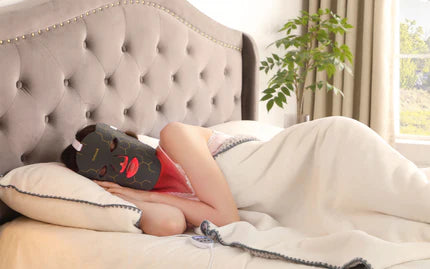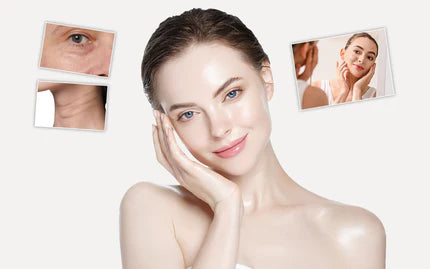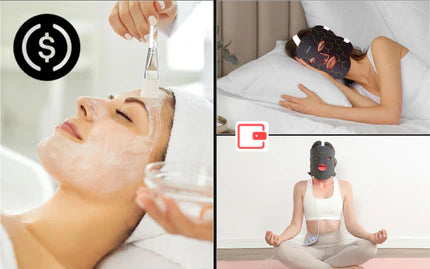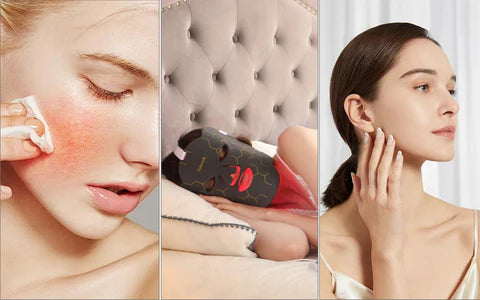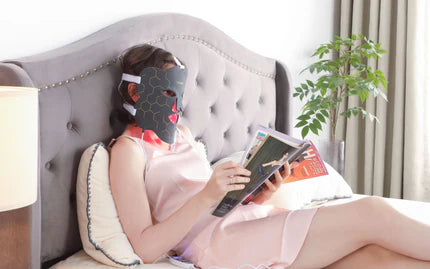Retinol creams and red light therapy are getting popular in skin care. Retinol, which comes from vitamin A, is good for reducing wrinkles and clearing up acne. Red light therapy uses a special kind of light to help improve how your skin looks, making it more radiant. People are curious if it's okay to use both at the same time and if doing so works better than using each one alone.
This article will explain what each treatment does by itself and then talk about using them together. It will also give some easy tips for anyone thinking about trying both treatments. If you're interested in skincare and want to know more about these treatments, we'll go over how they might fit into your daily routine.
Retinol for Beginners: Making Your Skin Look Its Best
What is retinol?
Retinol is a form of vitamin A that's commonly used in skincare products aimed at reducing signs of aging. It's an effective ingredient found in creams and serums for improving skin condition.
How does it work?
When you use retinol, it helps your skin renew itself more quickly and increases collagen production. Collagen makes your skin look firm and youthful. Retinol can also clear out pores, which is helpful if you often get pimples or blackheads.

Benefits for skin health and appearance:
- Reduces the appearance of fine lines and wrinkles
- Evens out skin tone for a more balanced complexion
- Enhances skin radiance, giving a natural glow
- Helps in treating acne breakouts
- Diminishes the visibility of dark spots on the skin
Potential side effects and precautions:
- Initial use may cause redness, dryness, or peeling skin
- These reactions typically subside after a few weeks
- Begin application sparingly (once or twice weekly) and increase gradually
- Increased sensitivity to sunlight; sunscreen is essential for daily use
The Science Behind Combining Retinol and Red Light Therapy
Utilizing retinol alongside red light therapy can be quite beneficial for your skin. Here’s how they complement each other:
Retinol works wonders on the skin's surface. It speeds up the replacement of old skin cells with new ones and enhances collagen production - that's the stuff that keeps your skin plump and youthful. It mainly focuses on the outermost layer of the skin, helping to shed dead cells and uncover the fresher ones waiting below.
Red light therapy goes beneath the surface. It uses certain wavelengths of light that penetrate the skin, reaching the deeper cells. This isn't just a superficial treatment; the light is absorbed by the cells, which then use this energy to boost their own healing and rejuvenation. You could say it helps 'power up' your skin from within.
When you use retinol and red light therapy together, you’re giving your skin a comprehensive treatment:
- Retinol addresses the surface, enhancing texture and tone.
- Red light therapy encourages the deeper layers of the skin to repair themselves and build more structural proteins like collagen and elastin.
This dual approach means retinol preps the surface for improvement, while red light therapy strengthens the underlying support. What’s more, studies suggest this combination might improve how well your skin absorbs retinol, increasing its effectiveness, and the boosted collagen production from both treatments can lead to enhanced anti-aging effects.
Combining these potent treatments should be done thoughtfully. Start slowly, monitor your skin's reaction, and adjust as needed. Remember, sunscreen remains essential since retinol can increase your skin's sensitivity to the sun.

Best Practices for Using Retinol and Red Light Therapy Together
1. When should you use retinol and red light therapy?
When you’re incorporating retinol and red light therapy into your skincare routine, it’s all about timing and balance. Ease into using retinol by applying it just a few nights each week while engaging in red light therapy sessions on the days you’re not applying retinol. As your skin adapts, you might find it comfortable to increase the usage frequency. A common approach is to use retinol at night and save the red light therapy for the morning.
2. In what order should you apply retinol and red light therapy?
If you're using both on the same day, it's generally best to do red light therapy first. This can help your skin absorb the retinol better. After using your red light therapy mask, wait about 10-15 minutes before applying your retinol product. This gives your skin a chance to cool down and reduces the risk of irritation.
3. How to determine the right dosage and intensity for your skin
Everyone's skin is different, so you might need to play around with the dosage and intensity. Start with a low-strength retinol (like 0.01% or 0.03%) and short red light therapy sessions (maybe 5-10 minutes). You can gradually increase the retinol strength and light therapy duration as your skin adjusts.
4. Monitoring skin response
Keep a close eye on how your skin reacts. A little redness or mild peeling is normal when you start using retinol, but if you notice excessive irritation, dryness, or breakouts, it's time to dial things back. Take a break for a few days and then reintroduce the treatments more slowly.
Revitalize Your Routine: Combine Retinol and Red Light Therapy Today!
Retinol and red light therapy can be effective by themselves, and when used correctly, they might help your skin look even better. However, everyone's skin is different, so it's crucial to start with a cautious approach, pay attention to your skin's response, and adjust your routine accordingly. Before starting this skincare duo, especially if you have sensitive skin, it's wise to get advice from a dermatologist. With the right balance and care, these treatments could be very beneficial. Always remember to use sunscreen when using retinol, and give yourself time to see the results.

FAQs on Retinol, Red Light Therapy, and Firming Up Skin
Q1: Can retinol fix saggy jowls?
Retinol might help firm up your jawline a little. It makes your skin cells renew faster and increases the amount of collagen, which can make your skin tighter and more elastic. This could lead to some tightening of the saggy areas along your jaw (jowls). But retinol won't work miracles for big changes; it's better for small improvements.
Q2: Will red light therapy tighten the skin around my jaw?
Yes, red light therapy may help tighten the skin around your jaw by making the skin smoother and more elastic. It does this by helping to build more collagen deep in your skin. If your skin isn't too saggy, you might see a difference. For bigger changes, combining red light therapy with other treatments is often suggested.
Q3: Can red light therapy help with turkey neck?
Red light therapy could improve the look of "turkey neck," which is loose skin on the neck. The therapy boosts collagen in the skin, which might make your neck look firmer and younger. But how well it works can vary from person to person. If your turkey neck is more noticeable, you might need more than just red light therapy to see big changes.
Q4: What's the best kind of light therapy for loose skin on my face?
For looser skin on your face, red light and near-infrared (NIR) light therapies are top picks. They're known for making more collagen, which keeps your skin firm and stretchy. NIR goes deeper into your skin than red light, getting down to where collagen is made, so it's especially good for tighter skin. Make sure you get a high-quality light device and use it regularly—results show up over time.
Q5: Should I stop using retinol if it makes my skin red?
If retinol is making your skin red, you might be dealing with what's called a "retinol burn," a kind of irritation from the product. If this happens, it's best to stop using retinol right away and give your skin time to heal. Once your skin feels better, you can start using retinol again, but begin slowly. Use a lower concentration than before and apply it less frequently to let your skin adjust without getting irritated. Over time, your skin usually gets used to retinol, which lowers the chance of a burn happening again.

